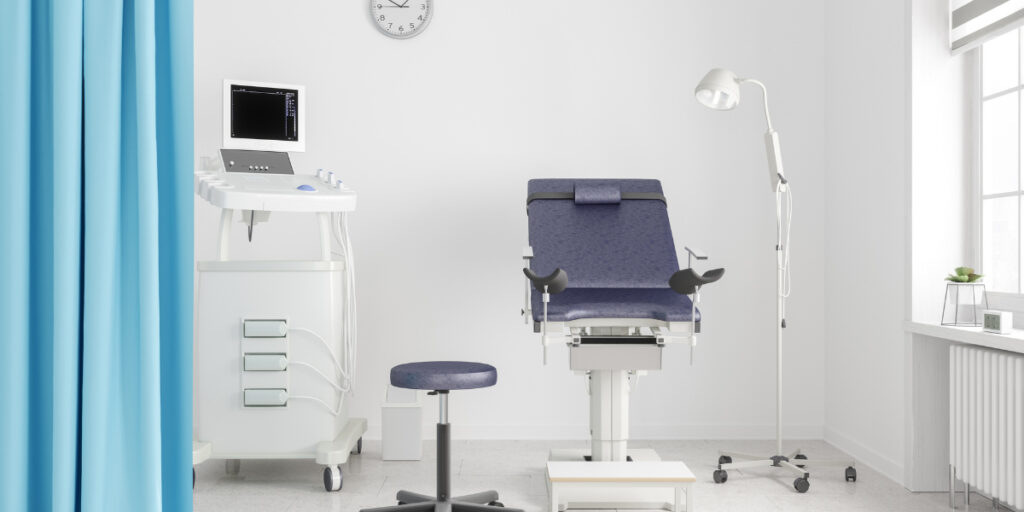
Starting in the 1980s, endometrial ablation emerged as an industry-leading surgical intervention for heavy menstrual bleeding.1 The minimally invasive procedure quickly grew in popularity for its benefits to both patients and gynecologists — namely, quicker recovery times, diminished need for anesthesia and analgesics, and reduced financial burden.2 With fewer procedural risks than a hysterectomy, many OBGYNs began performing endometrial ablations in an office setting.3 However, several physicians continue to question if this transition compromises patient comfort and safety.
One of the most common reasons gynecologists choose the operating room for endometrial ablations is full control over pain management.4 Despite being a minimally-invasive procedure, ablation can still create considerable cramping or pain, due to the need for cervical dilation and the methods used to achieve tissue destruction. Rather than a local anesthetic, some providers opt for general anesthesia in order to guarantee a painless procedure. Even light sedation may require time-consuming perioperative care as well as additional patient supervision — not to mention the substantial increase in cost of care.5 While many procedures require operating rooms for the best patient outcomes, some endometrial ablation procedures do not warrant a trip to the hospital.
Although gynecologists can safely perform ablations in the office, patient comfort remains the primary concern, as treatment may be quite painful. Many patients still need general anesthesia or IV sedation to tolerate the procedure. That said, there are certain measures providers can take in order to minimize the need for full sedation.
The ideal candidate for endometrial ablation is around 40 years of age, has no major structural uterine abnormalities, no endometrial hyperplasia or malignancy, and has a uterine cavity no longer than 10 cm.4 Patients with any of these contraindications may have poorer outcomes, including heightened post-procedural pain.6
Many patients feel nervous before their procedures, but this anxiety may manifest as more than just emotional strife. In fact, pre-operative anxiety is causally linked to the experience of increased procedural pain, worse outcomes and extended recovery times.7 To mitigate emotional distress before endometrial ablations, OBGYNs can create a more relaxing and hospitable experience with shorter preprocedural waiting times, music, lighting changes, or reassurance that the patient is still in control of her body.4 Additionally, low-dose oral anxiolytic medications can successfully calm nervous patients.4
Without effective pain relief strategies, the patient experience may be severely impacted by allowing severe procedural pain or resorting to full sedation. Doing so negates the benefits of an office-based procedure, as patients would likely be more comfortable in the operating room. Ideally, providers should use ablation techniques that ensure patient tolerability without the need for sedation. However, common anesthetic and analgesic protocols fail to provide enough pain relief for most heat-based ablation technologies.8
Along with a variety of physical and mental strategies used to relieve pain and anxiety both before and after ablation, cryoanalgesia delivers additional pain management during the procedure itself. Endometrial cryoablation leverages cooling technology to ablate the endometrium while simultaneously freezing the sensory nerves supplying the uterus for an enhanced analgesic effect.4
The Cerene® Cryotherapy Device is a novel FDA approved global endometrial ablation device that deploys nitrous oxide into a liner that conforms to the shape of the uterine cavity of patients suffering from menorrhagia.4 The cryoablation technology provides natural pain relief for higher tolerability and patient satisfaction. Cerene can be successfully used in the office setting without sedation, resulting in enhanced patient comfort and procedure tolerability without general anesthesia. Likewise, Cerene helps improve provider efficiency and workflow by employing a rapid, effective ablation technology that eliminates the need for capital equipment and bypasses the time- and personnel-intensive process of IV sedation or anesthesia.
A 2020 prospective clinical trial found that Cerene patients reported a median pain score of 2 on a 10-point scale — and 100% of those patients in the U.S. were treated with only a paracervical block and oral pain medication.4 Just 24 hours after treatment, patients reported a median pain score of 0 out of 10, and most were able to return to their daily activities. Furthermore, 90% of patients reported normal, light, or no periods† and 86% experienced reduced cramping following treatment with Cerene.*
† Patient-reported data are 1 year after treatment with durable results at 3 years
* Improvement reported one year after treatment for patients reporting severe/very severe cramping
Cerene® Cryotherapy Device is indicated to ablate the endometrial lining of the uterus in premenopausal women with heavy menstrual bleeding due to benign causes for whom childbearing is complete. Pregnancy following the Cerene procedure can be dangerous; therefore, contraception must be used until menopause. The Cerene procedure is not for those who have or suspect uterine cancer; have an active genital, urinary or pelvic infection; or an IUD. There are risks and considerations associated with the use of the Cerene Cryotherapy Device. Temporary side effects may include uterine cramping, vaginal infection, and lightheadedness. For detailed benefit and risk information, consult the Cerene Instructions for Use (IFU) or your healthcare professional. Learn more >
Sources:
Important Safety Information
Cerene® Cryotherapy Device is indicated to ablate the endometrial lining of the uterus in premenopausal women with heavy menstrual bleeding due to benign causes for whom childbearing is complete. Pregnancy following the Cerene procedure can be dangerous; therefore, contraception must be used until menopause. The Cerene procedure is not for those who have or suspect uterine cancer; have an active genital, urinary or pelvic infection; or an IUD. As with all surgical procedures, there are risks and considerations associated with the use of the Cerene Cryotherapy Device. Temporary side effects may include cramping, nausea, vomiting, vaginal discharge and spotting. For detailed benefit and risk information, consult the Cerene Instructions for use (IFU) or your healthcare professional. Learn More
